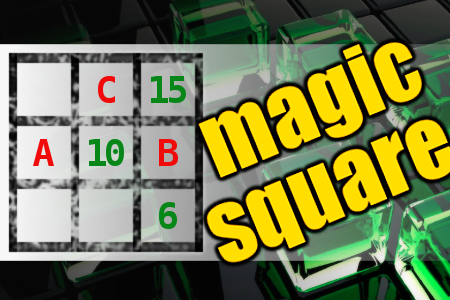MAGIC SQUARE: Calculate A+B-C
The aim is to place the some numbers from the list (4, 6, 8, 10, 11, 15, 53, 72, 74, 79) into the empty squares and squares marked with A, B an C. Sum of each row and column should be equal. All the numbers of the magic square must be different. Find values for A, B, and C. Solution is A+B-C.Correct answers: 17
The first user who solved this task is Djordje Timotijevic.
#brainteasers #math #magicsquare


